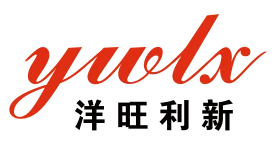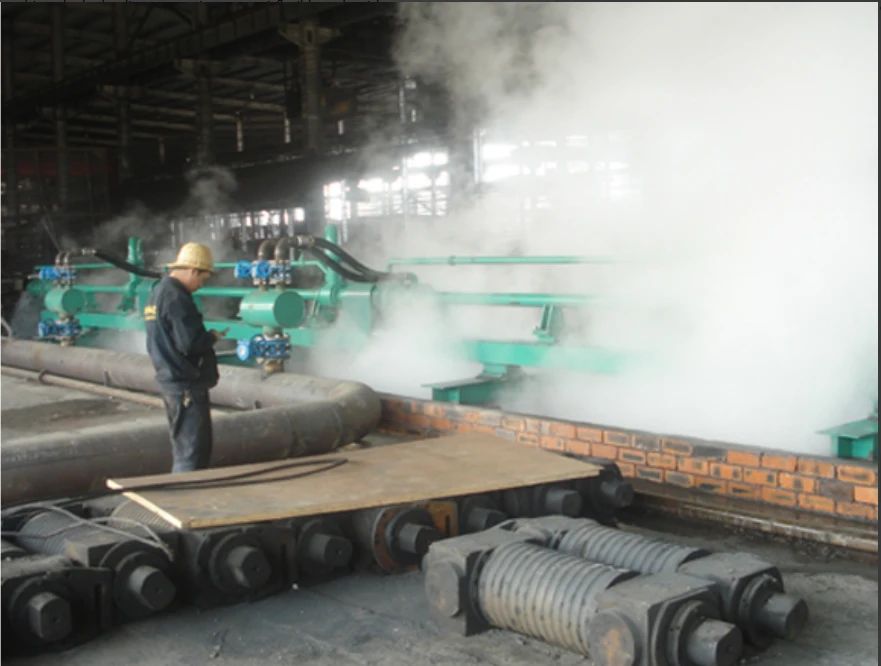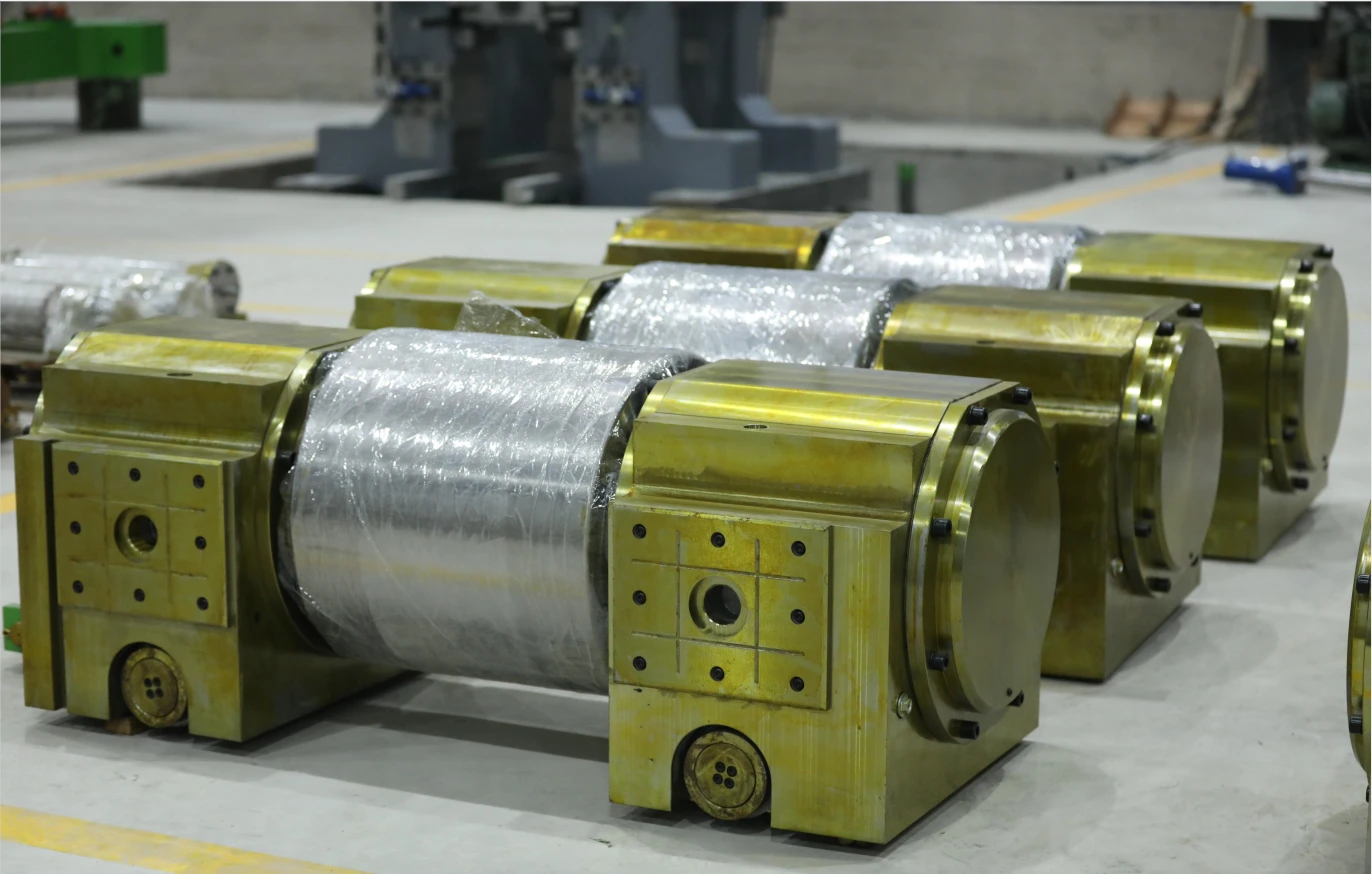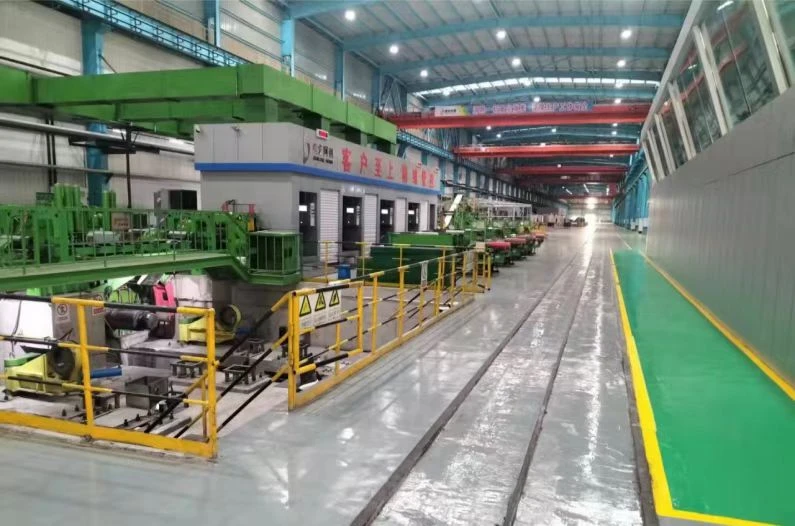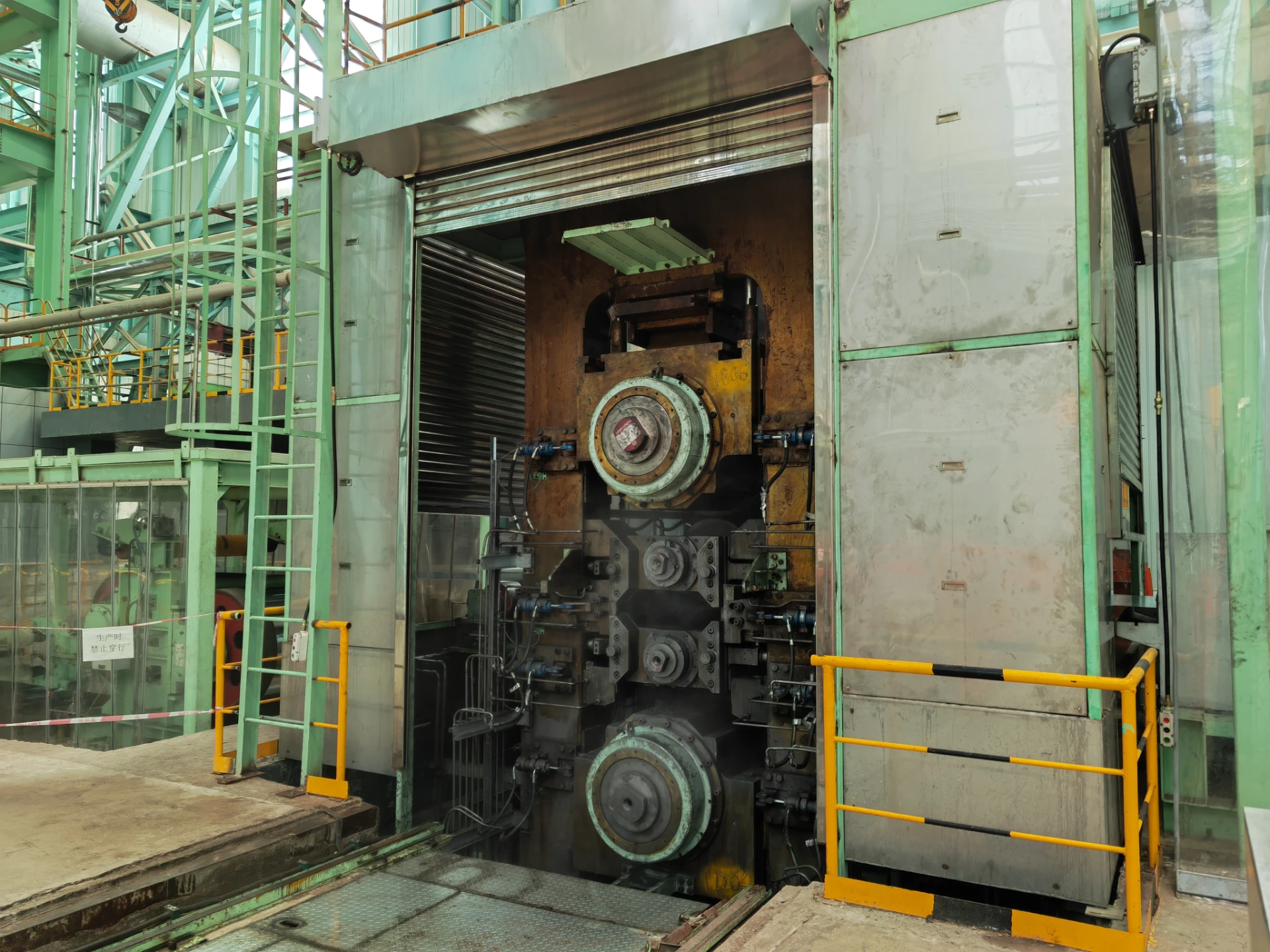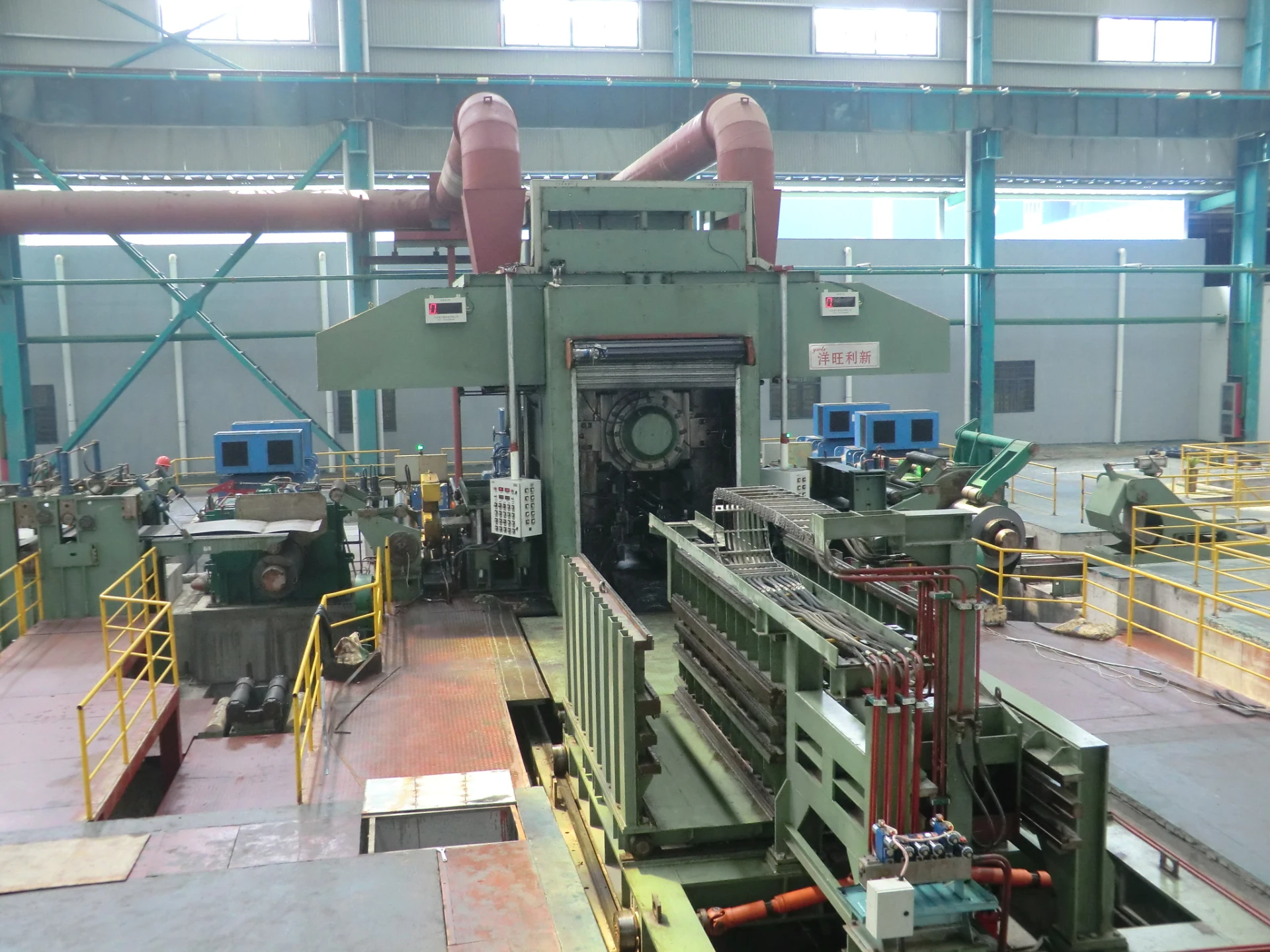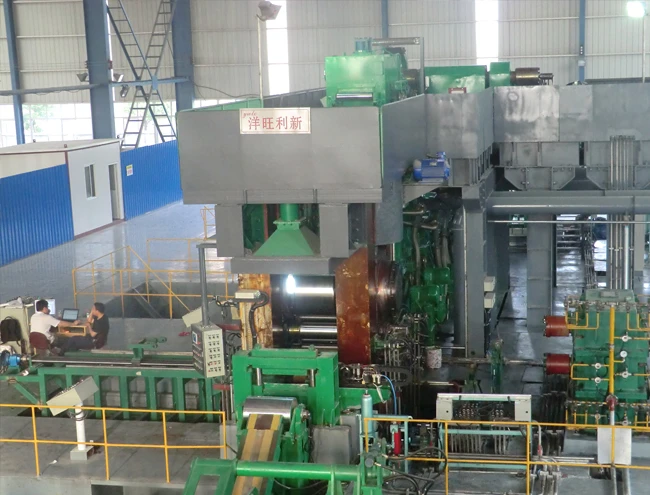
High-Performance Reversing Rolling Mill for Precise Metal Processing
Jul . 23, 2025 11:01
Back to list
High-Performance Reversing Rolling Mill for Precise Metal Processing
Comprehensive Insight into Reversing Rolling Mill Technologies & Industry Trends
In the dynamic world of metalworking, reversing rolling mill systems are pivotal for producing high-quality strip and sheet products. As the industry moves towards increased precision, reduced tolerances, and higher productivity, the significance of reversing rolling mill—including 4hi reversible cold rolling mill and 6 hi reversing cold rolling mill structures—continues to grow, especially in sectors demanding ultra-thin, highly consistent materials.
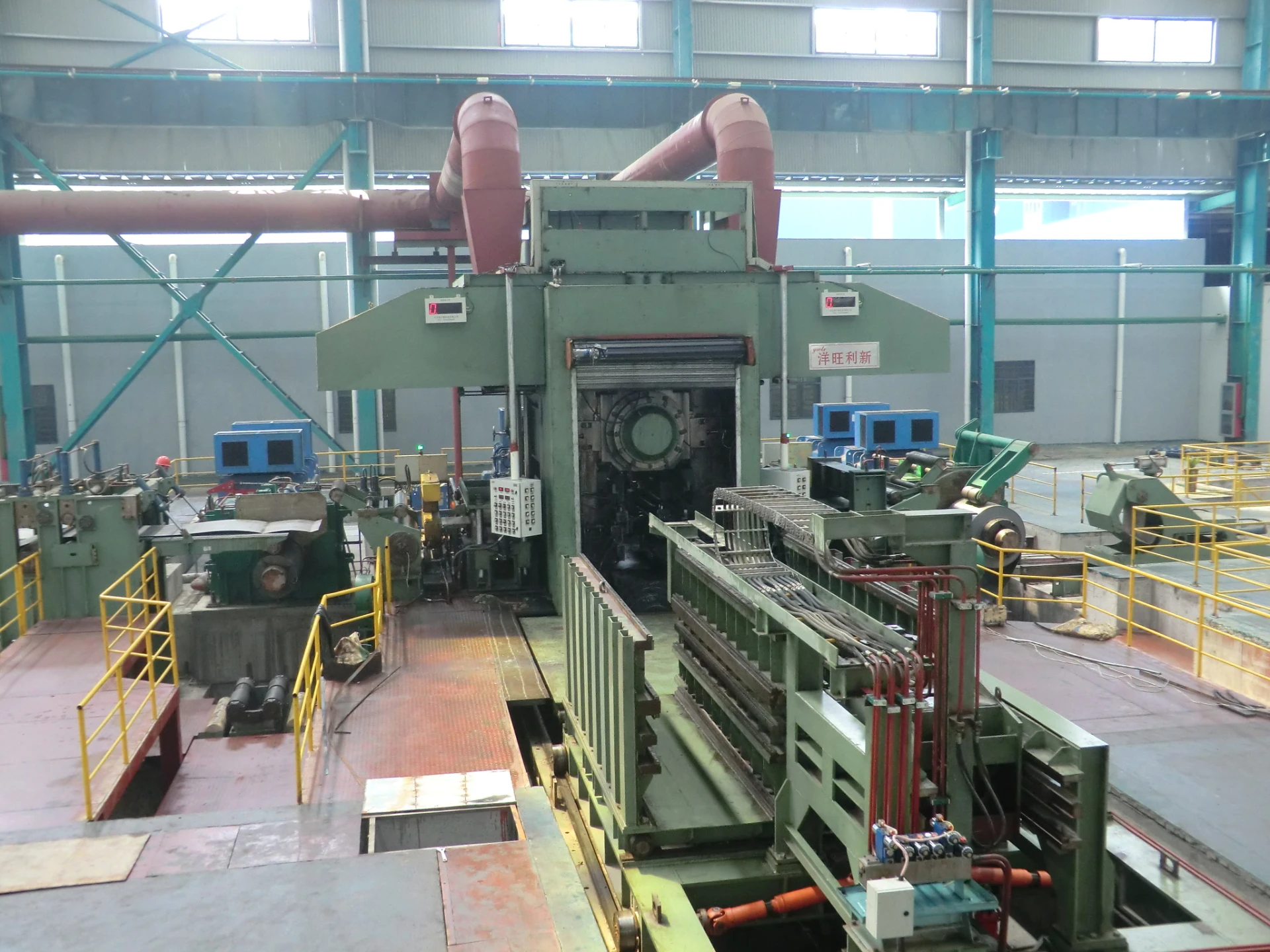
Beijing Yang Wang Li Xin Sci&Tech Co.,Ltd. is a leading innovator and supplier of Four/Six-Hi Reversing Cold Rolling Mill(reversing rolling mill)solutions. With extensive experience delivering to prominent Chinese steel manufacturers, our expertise in both 4hi reversible cold rolling mill and 6 hi reversing cold rolling mill positions us as one of the most reliable partners in the metallurgical industry.
1. Industry Overview and Trends in Reversing Rolling Mill Technology
The reversing rolling mill sector, particularly for cold rolling applications, is experiencing rapid evolution in response to:
- Growing demands for thinner steel and special alloys
- Tighter thickness, flatness, and surface finish tolerances
- Multi-material compatibility: carbon steel, silicon steel, stainless steel, high-strength alloys
- Integration of digital technologies, automation, and remote diagnostics
- Energy efficiency, roll gap optimization, and real-time feedback systems
2. Product Profile: Four/Six-Hi Reversing Cold Rolling Mill by YWLX
Four/Six Hi finishing reversing cold rolling mills from Beijing Yang Wang Li Xin Sci&Tech Co.,Ltd. are supplied in both 4hi reversible cold rolling mill and 6 hi reversing cold rolling mill configurations.
Key Features:
Key Features:
- Model: Four/Six-Hi Reversing Cold Rolling Mill (reversing rolling mill)
- Application: Precision rolling of carbon steel strip, oriented/non-oriented silicon steel strip, stainless steel strip
- Width Range: 900mm, 1150mm, 1380mm
- Thickness Capability: SPHC carbon steel from 3.0mm to 0.2mm in 6 passes (no in-process annealing)
- Silicon Steel: From 0.63mm to 0.26mm in 2-3 passes, meeting strictest flatness and thickness tolerance criteria
- Applications: Electrical, automotive, precision building components, appliance, and special alloy industries
- Digital Technologies: Customizable automation, real-time diagnostics, integrated feedback controls
Manufacturer: Beijing Yang Wang Li Xin Sci&Tech Co.,Ltd.
Website: https://www.bjywlx.com
Tel: +86 10-63324628
Email: Alley.wang@bjywlx.com
Mobile: +86 18630169310
Address: No.1518, LAR Valley Int'l, Guangwai Avenue, Xicheng District, Beijing, 100055
Website: https://www.bjywlx.com
Tel: +86 10-63324628
Email: Alley.wang@bjywlx.com
Mobile: +86 18630169310
Address: No.1518, LAR Valley Int'l, Guangwai Avenue, Xicheng District, Beijing, 100055
3. Technical Overview: Reversing Rolling Mill & Global Parameter Comparison
| Parameter | 4hi Reversible Cold Rolling Mill | 6 hi Reversing Cold Rolling Mill |
|---|---|---|
| Max Strip Width | 650mm-1380mm | 900mm-1380mm |
| Input Thickness | Up to 5.0mm | Up to 3.0mm |
| Output Thickness | 0.25-2.5mm | 0.20-2.0mm (as thin as 0.15mm for Si-steel) |
| Roll Stands | 4 (2 work, 2 backup) | 6 (2 work, 2 intermediate, 2 backup) |
| Typical Materials | Carbon steel, low-alloy, soft stainless steel | Carbon steel, stainless, silicon steel, high-strength steel |
| Mill Power | 800-1200kW | 900-1400kW |
| Flatness Control | Hydraulic AGC, manual bending | Hydraulic AGC, intermediate roll shifting, CVC |
| Passes (to Final Thickness) | 4-7 | 2-6 (fewer for high-six mills) |
| Typical Output | 30,000-80,000 t/year | 40,000-120,000 t/year |
4. Visualization: Reversing Rolling Mill Parameter & Capability Charts
5. Application Scenarios
Reversing rolling mill systems play a central role in the following industries:
- Electrical (Transformers, Motors): Oriented/non-oriented silicon steel strips
- Automotive: Ultra-high strength, defect-free precision strips for functional and body parts
- Appliance Manufacturing: Stainless and low-alloy cold-rolled coils
- Construction & Infrastructure: Galvanized architectural components, roofing sheets
- Precision Engineering: Thin, ultra-flat strips for sensors and micro-electronics
6. Core Technical Highlights from YWLX's Reversing Rolling Mill Series
- Advanced AGC Systems: Closed-loop automatic gauge control for real-time adjustment and guaranteed tolerances
- Hydraulic Bending & Intermediate Roll Shifting: Enables superior flatness and compensation for strip shape deviations
- Non-Stop Reverse Function: Increases productivity by eliminating manual reversal operations
- Fully Integrated CVC & Crown Control: Delivers consistent thickness and ultra-flat product surfaces
- Green, Low-Noise Design: Modern drive systems and roll cooling reduce overall energy consumption
- Customized Automation: MES compatibility, data logging, and remote diagnostics as standard
- High-Capacity Mill Motors: Applicable for heavy reduction operations, with up to 1.4MW installed
7. Professional FAQ on Reversing Rolling Mill Terminologies
Frequently Asked Technical Questions
1. What is the difference between 4hi and 6hi reversing rolling mills?
4hi mills use two work rolls and two backup rolls, suitable for basic cold rolling on common steel grades. 6hi mills add two intermediate rolls, allowing better flatness control and the ability to roll harder materials and thinner strips.
4hi mills use two work rolls and two backup rolls, suitable for basic cold rolling on common steel grades. 6hi mills add two intermediate rolls, allowing better flatness control and the ability to roll harder materials and thinner strips.
2. What are the standard material grades processed?
Reversing rolling mills process carbon steel (SPHC, Q195-Q345), low-alloy steels, austenitic and ferritic stainless steel, and both oriented/non-oriented silicon steels.
Reversing rolling mills process carbon steel (SPHC, Q195-Q345), low-alloy steels, austenitic and ferritic stainless steel, and both oriented/non-oriented silicon steels.
3. What is AGC (Automatic Gauge Control)?
AGC precisely regulates strip thickness during rolling via hydraulic/electronic sensors, ensuring compliance with required tolerances.
AGC precisely regulates strip thickness during rolling via hydraulic/electronic sensors, ensuring compliance with required tolerances.
4. How are finishing thickness and flatness assured?
Via hydraulic roll bending, intermediate roll shifting (6hi/CVC), and high-speed feedback loops connected to the control PLC, ensuring shape uniformity across coils.
Via hydraulic roll bending, intermediate roll shifting (6hi/CVC), and high-speed feedback loops connected to the control PLC, ensuring shape uniformity across coils.
5. What are the typical strip dimensions?
Width: 900mm to 1380mm; Input thickness: up to 3-5mm; Output: as low as 0.15mm for high-grade silicon or carbon strips.
Width: 900mm to 1380mm; Input thickness: up to 3-5mm; Output: as low as 0.15mm for high-grade silicon or carbon strips.
6. What installation and safety standards are followed?
All YWLX reversing rolling mill lines are compliant with GB/T 19896-2016 & IEC/ISO electrical safety codes for industrial rolling mills.
All YWLX reversing rolling mill lines are compliant with GB/T 19896-2016 & IEC/ISO electrical safety codes for industrial rolling mills.
7. How does a reversing mill improve strip quality?
Strips pass through multiple passes in both directions. Each pass further reduces thickness and improves flatness, allowing for precision outcomes not possible with reversing mills.
Strips pass through multiple passes in both directions. Each pass further reduces thickness and improves flatness, allowing for precision outcomes not possible with reversing mills.
8. Authoritativeness, Trustworthiness and Industry References
- 2024 Global Trends Analysis: "Optimization in Cold Rolling Mills: Mechanisms for Improved Tolerances and Flatness", Proceedings of the Institution of Mechanical Engineers Part C: Journal of Mechanical Engineering Science.
- International Benchmarking: "State-of-the-Art Rolling Technologies for High-Quality Cold-Rolled Strips", Materials Today: Proceedings.
- Practical Case Study, by AIST: "Details of Cold Rolling Mill Modernizations", The Association for Iron & Steel Technology, 2023.
- Peer-Reviewed Industry Forum: "Cold Rolling Technical Developments and Future Trends", Cogent Engineering Journal.
Latest news
-
YWLX’s 1450mm Six-Hi Reversing Mill Goes Live in BangladeshNewsNov.24,2025
-
Adjusting Roll Gap in 6Hi Reversing Cold Rolling Mill for Thin StripNewsNov.13,2025
-
Quality Control Standards for Automatic Gauge Control in Strip RollingNewsNov.13,2025
-
Effect of Skin Pass Rolling on Metal DuctilityNewsNov.13,2025
-
Key Components of a Modern TempermillNewsNov.13,2025
-
Common Wear Patterns of Work Roll in Tandem Cold Mill OperationsNewsNov.13,2025
-
Revolutionary Skin Pass Rolling Technology for Enhanced Steel QualityNewsNov.04,2025
Related Products


